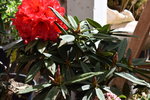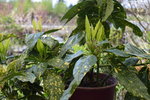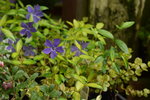


Think about all the open areas in your yard or around your home that would be nice spots to insert a garden. Now think about some clustered areas with trees, bushes and whatever else taking up space and sight of the blue sky. You couldn’t garden there. Or could you?
Shade gardening is a fun challenge for gardeners, and of course, there’s nothing wrong with turning a dull dark area into something vibrant. In the Pacific Northwest local gardeners have about as many shade gardening opportunities as anyone with all our trees.
Shade gardens are tough tasks, but they don’t have to be frustrating if you know what you’re doing. Below is a combination of cautions and neat ideas for those willing to give it a try from The Reflector and Bird’s English Garden and Nursery in Ridgefield.
CAUTIONS
Sunlight assessment
Before you start planting, it’s important to know what you’re about to start working with. Determine the degree of shade in the area you want to make into a shade garden. How much sunlight/shade do specific little spots receive? The levels of shade will determine which species will thrive there. Once that’s determined research plants that can survive with the amount of sunlight they’ll get and pick the ones you want.
According to Connie Gisi of Bird’s English Garden and Nursery, most of the best types of plants for shade gardens need to go without a ton of sunlight.
“The biggest mistake I see people make is putting things in light that need shade,” she said. “They’ll dry out really fast.”
The idea that some plants need to mostly avoid light is a bit of an odd thought for beginning gardeners, but it’s the case with shade gardens.
Moisture shortage
Besides light, inadequate moisture can be a problem with developing shade gardens. The reason the area is shady in the first place is because there’s something hanging over it — which means it’s going to be hard for rain to get there too. When moisture is at a shortage plants start competing for it, so it’s essential that if you want a shade garden it needs to be watered even when rain is falling a seemingly good amount.
“Shade Gardens tend to be much more drought intolerant,” Gisi said.
SUGGESTIONS
Man-made features
A lot of popular places for shade gardens are those in-between the fence and house areas, or around a wood shed that sits next to overgrowth, for example. In many cases there’s no reason why a small walking path couldn’t be installed there and often times it’s just sort of muddy in these areas because there was never really enough room to have an actual yard in the space. Not only will a path be nice for that, but it will also provide a secondary color splash to whatever you plant around it.
In addition to the idea of a path (made of stones, bark or gravel), Gisi said benches, bird houses/feeders, and yard art are good items to place and then plant around.
Groundcovers
Here we go with the actual gardening.
Groundcovers come in many forms and basically are a way to cover ugly blank areas without grass. Many believe groundcovers are more stylish.
Gisi said some good options for groundcovers are lamium and vincas. Vincas are capable of blooming purple, white or burgundy, so going with them gives you a variety of options, she said.
Shrubs
To cover more space off of the ground aucuba shrubs are a good pick.
“They get pretty large,” Gisi said, adding that aucuba come with little yellow spots on their leaves which make them nice providers of subtle brightness.
Another sizable shrub to consider is Japanese aralia. What you're likely to see most around the Northwest though are rhododendrons. Native to the area, these plants bloom in many different colors such as pink, white, purple and red.
Trees
For trees, Gisi said a couple different species that do well in the shade are full moon maples and paperbarks. Adding a tree to a shade garden is also a great way to increase the size of the garden.
Many gardeners have never heard of shade gardening but Gisi said it can be a real benefit to most homes.
“They’re the coolest part of your yard during the summer,” she said. “You’re probably going to spend a lot of time there in the shade on hot days, so you might as well make it look and feel nice.”
“You’ll get enjoyment out of it (a shade garden) as soon as it’s in,” said Gisi. “For some reason they’re just so soothing.”
At the Home and Garden Idea Fair coming up this weekend, Bird’s English Garden and Nursery is set to have a plant sale booth set up in spaces #18 and #28.
Gisi and Bird’s English Garden and Nursery specialize in shade gardening and their store is located at 1296 S. Dolan Road, Ridgefield.